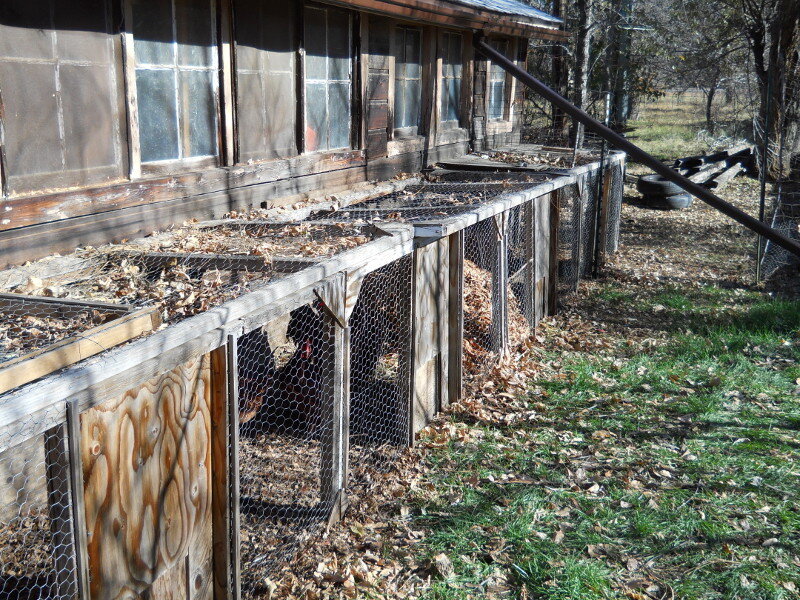Seasonal Chicken Run
We like to let our chickens out on the land because the greens, bugs and worms they eat make the eggs and meat they produce for us more nutritious. However, if you confine chickens to a piece of ground they will quickly strip it of vegetation and make a mud pit. We keep our laying flock in a large coop with enclosed outdoor run and let them free range when I have the time to watch them and keep them out of my hugel mulches. I add hay and leaves to maintain a deep litter in both the coop and outside run. Litter in the outside run decomposes at a rate determined by how wet it is and we ran into a problem in the litter building up so that the rain ran into the building on top of the slab. There is an additional fenced run that is occupied by the annual brood that we produce. Each year's brood is born May 1 and are old enough to be out in the additional fenced run on July 1. Around the first of September we will butcher all but one cock from that batch and distribute the hens. Some hens will replace older hens in our breeding flock, some will be distributed to team members and some will be sold. During the two months the brood has access to the additional out door run they will strip it bare. Here is our latest experiment in addressing these issues.
In the fall of 2015 we installed a gutter and dug a swale the length of the building. The ground slopped west to east so we had to build up the berm on the east end.
We ran the downspout out to the swale.
In the area in front of the deep litter run, and after butchering (and putting in the swale) I broad cast some wheat seed I picked up at Whole Foods. The wheat will grow all winter long taking up the nitrogen from this year's brood. The wheat will set seed and be ready for next year's brood by July 1 of next year.
Along the fence line in the run is a stand of volunteer wild plum with some ash, Siberian elm and gooseberry also volunteering. The wild plum produce an abundance of early blooms for the honey bees. The plums survive along the fence because the shade of the fence retains moisture in the ground. In 2015 one of the dead Siberian elms in the fence row rotted out at the roots and blew over in the wind. I processed the wood from that tree to increase the habitat for soil organisms and retain additional moisture. I dumped some of the leaves I collected from my neighbors on top of the processed branches to accelerate the decomposition process.
Instead of a barren mud pit, our seasonal chicken run will be a valuable habitat for many species in our living system including each year's brood of chickens.


